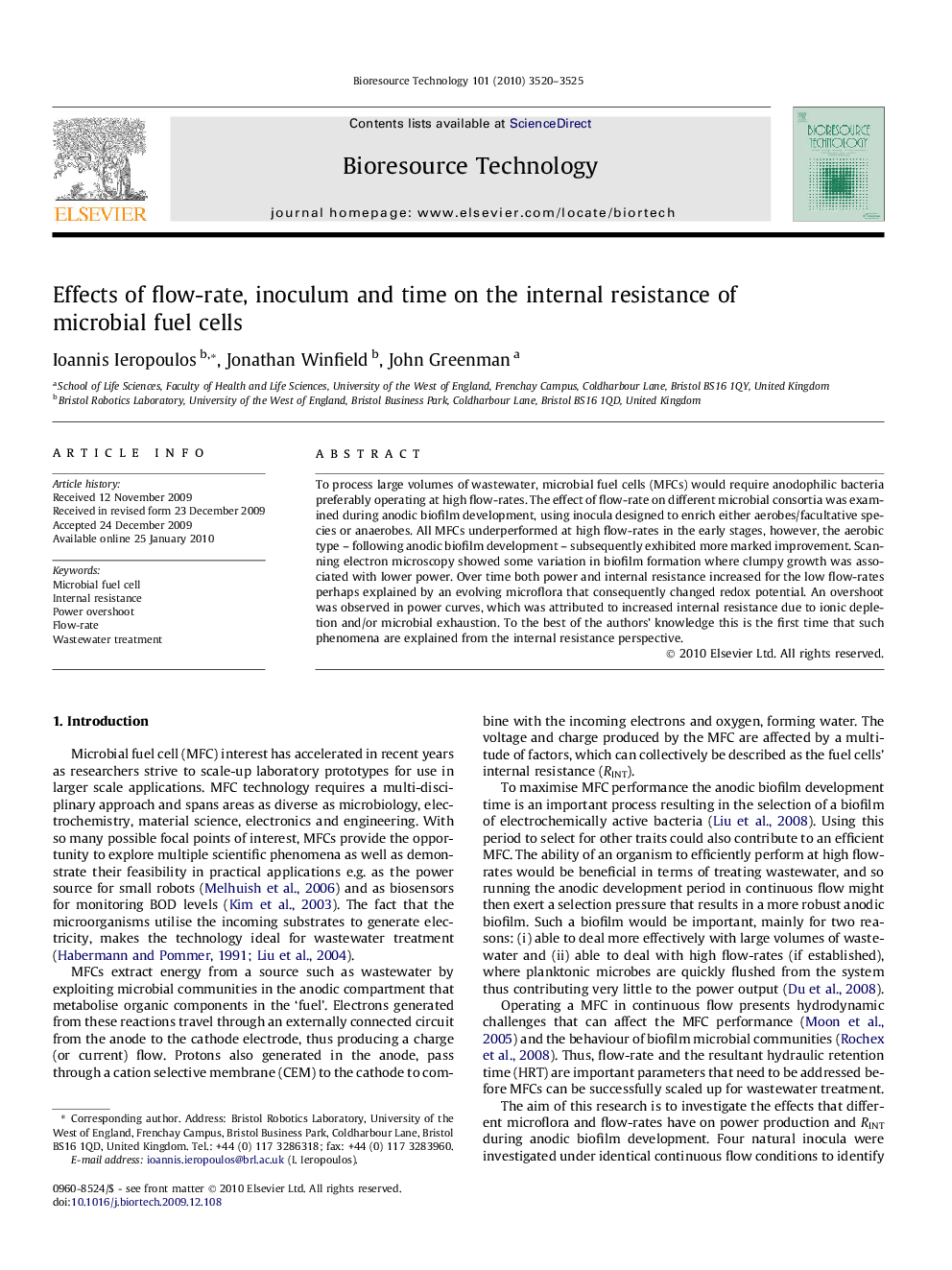| کد مقاله | کد نشریه | سال انتشار | مقاله انگلیسی | نسخه تمام متن |
|---|---|---|---|---|
| 683270 | 888998 | 2010 | 6 صفحه PDF | دانلود رایگان |

To process large volumes of wastewater, microbial fuel cells (MFCs) would require anodophilic bacteria preferably operating at high flow-rates. The effect of flow-rate on different microbial consortia was examined during anodic biofilm development, using inocula designed to enrich either aerobes/facultative species or anaerobes. All MFCs underperformed at high flow-rates in the early stages, however, the aerobic type – following anodic biofilm development – subsequently exhibited more marked improvement. Scanning electron microscopy showed some variation in biofilm formation where clumpy growth was associated with lower power. Over time both power and internal resistance increased for the low flow-rates perhaps explained by an evolving microflora that consequently changed redox potential. An overshoot was observed in power curves, which was attributed to increased internal resistance due to ionic depletion and/or microbial exhaustion. To the best of the authors’ knowledge this is the first time that such phenomena are explained from the internal resistance perspective.
Journal: Bioresource Technology - Volume 101, Issue 10, May 2010, Pages 3520–3525